Here are 15 of the most amazing rock-cut carvings in the world and they're all in India
Ancient civilizations flourished by using their surroundings to their advantage. These ancient, Indian cultures made history by carving some of the most epic living stations the earth has ever seen out of solid rock.
Of the more than 1,500 rock-cut temples in India, these 15 are some of the most outstanding and worth a mention, if not a visit.
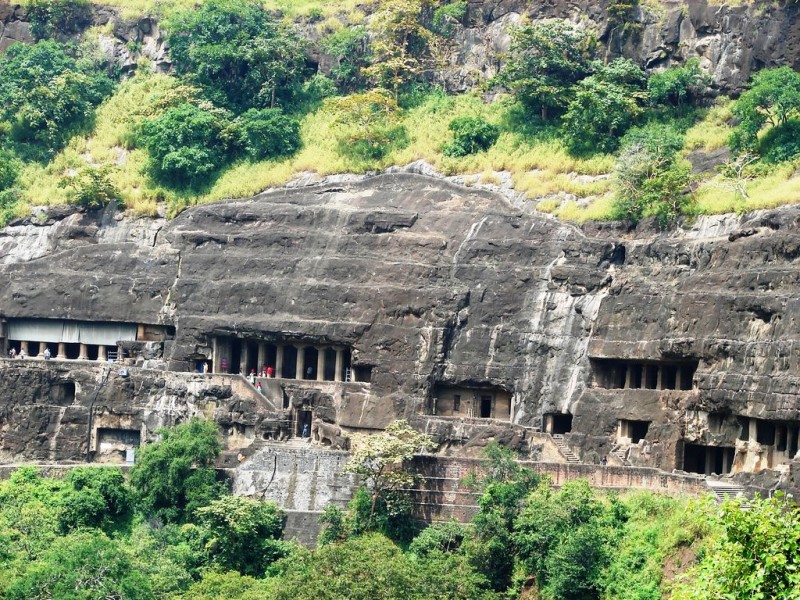
The Ajanta Caves in Aurangabad district of Maharashtra state of India are about 30 rock-cut Buddhist cave monuments which date from the 2nd century BCE to about 480 or 650 CE. The caves include paintings and rock cut sculptures described as among the finest surviving examples of ancient Indian art, particularly expressive painting that present emotion through gesture, pose and form. According to UNESCO, these are masterpieces of Buddhist religious art that influenced Indian art that followed. The caves were built in two phases, the first group starting around the 2nd century BC, while the second group of caves built around 400–650 AD according to older accounts, or all in a brief period of 460 to 480 according to Walter M. Spink.
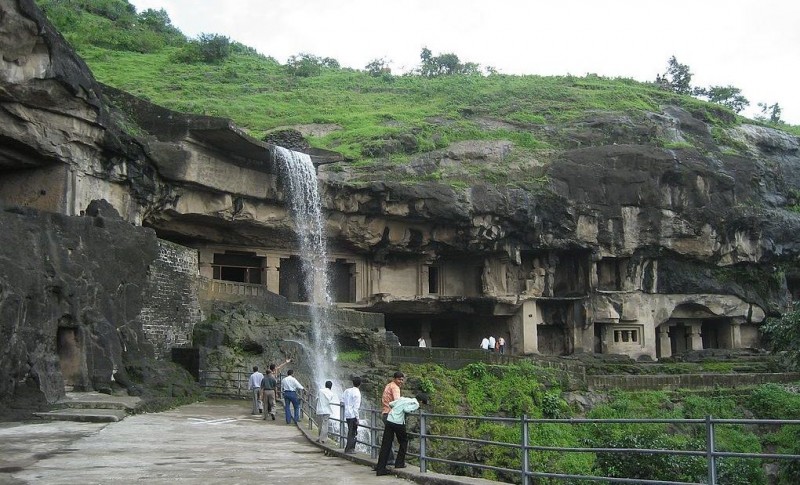
Ellora is one of the largest rock-cut monastery-temple caves complexes in the world, and a UNESCO World Heritage Site in Maharashtra, India. The site presents monuments and artwork of Buddhism, Hinduism and Jainism from the 600-1000 CE period. Cave 16 of Ellora features the largest single monolithic rock excavation in the world, the Kailasha temple, a chariot shaped monument dedicated to Shiva. The Kailasha temple excavation also presents the gods, goddesses and mythologies found in Vaishnavism, Shaktism and relief panels summarizing the two major Hindu Epics.
3. Elephanta Caves, Maharashtra
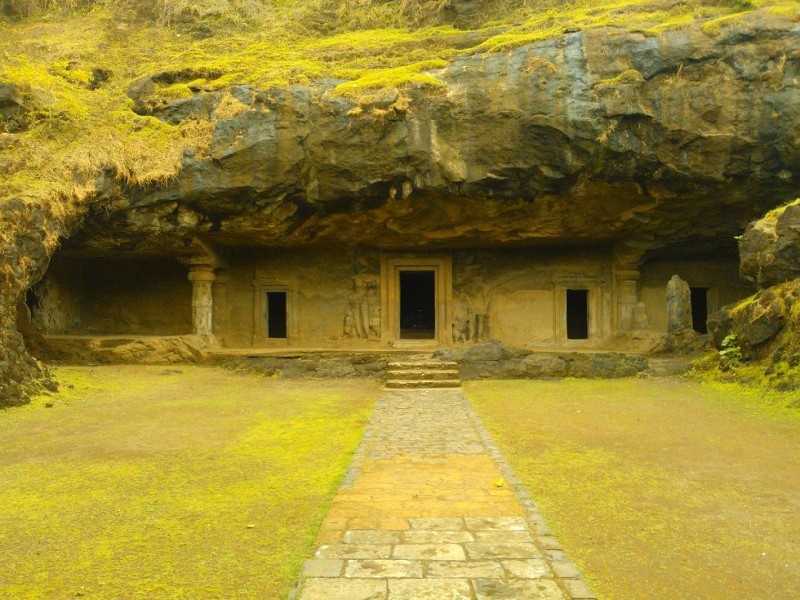
Elephanta caves are a network of sculpted caves located on Elephanta Island, or Gharapuri (literally "the city of caves") in Mumbai Harbour, 10 kilometres (6.2 mi) to the east of the city of Mumbai in the Indian state of Maharashtra. The island, located on an arm of the Arabian Sea, consists of two groups of caves—the first is a large group of five Hindu caves, the second, a smaller group of two Buddhist caves. The Hindu caves contain rock cut stone sculptures, representing the Shaiva Hindu sect, dedicated to the Lord Shiva.
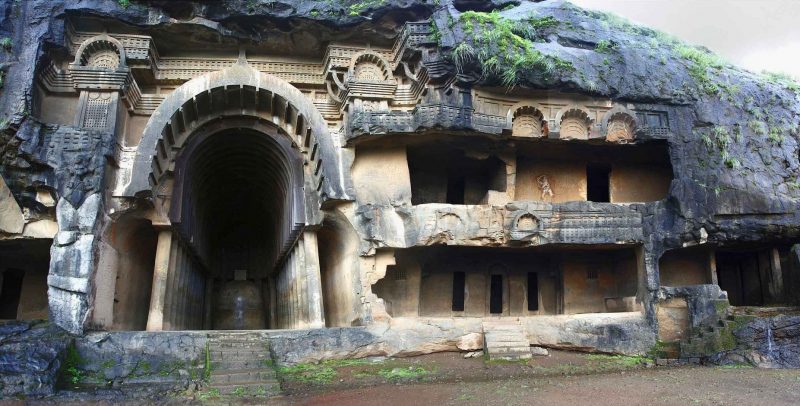
Bhaja Caves are a group of 22 rock-cut caves dating back to the 2nd century BC located in Pune, near Lonavala, Maharashtra. The caves are 400 feet above the village of Bhaja, on an important ancient trade route running from the Arabian Sea eastward into the Deccan Plateau (the division between North India and South India). The inscriptions and the cave temple are protected as a National Monument, by the Archaeological Survey of India per Notification No. 2407-A. It belongs to the Hinayana Buddhism sect in Maharashtra. The caves have a number of stupas, one of their significant features. The most prominent excavation is its chaityagrha (Cave XII), demonstrating prototypes of wooden architecture and a vaulted horseshoe ceiling.
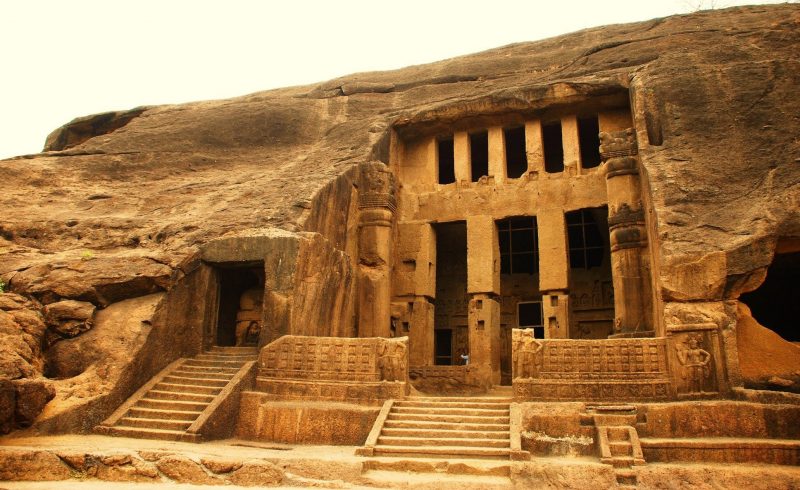
The Kanheri Caves constitute a group of rock-cut monuments that are located to the southeast of Borivali on the western outskirts of Mumbai, the capital city of Indian State of Maharashtra. Located within the forests of the Sanjay Gandhi National Park, the caves are 6 km from the main gate and 7 km from Borivali Station. Tourists can enter after 9:00 a.m. The Kanheri Caves demonstrate the Buddhist influence on the art and culture of India. Kanheri comes from the Sanskrit Krishnagiri, which means black mountain. They were chiseled out of a massive basaltic rock outcropping.
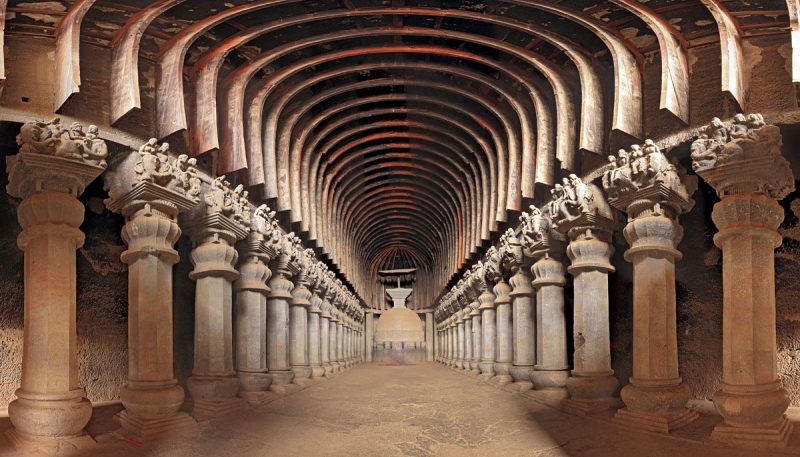
The Karla Caves are a complex of ancient Indian Buddhist rock-cut cave shrines located in Karli near Lonavala, Maharashtra. The shrines were developed over the period – from the 2nd century BC to the 5th century AD. The oldest of the cave shrines is believed to date back to 160 BC, having arisen near a major ancient trade route, running eastward from the Arabian Sea into the Deccan. Karli's location in Maharashtra places it in a region that marks the division between North India and South India. Buddhists, having become identified with commerce and manufacturing through their early association with traders, tended to locate their monastic establishments in natural geographic formations close to major trade routes so as to provide lodging houses for travelling traders. Today, the cave complex is a protected monument under the Archaeological Survey of India.
7. Udayagiri and Khandagiri Caves, Odisha
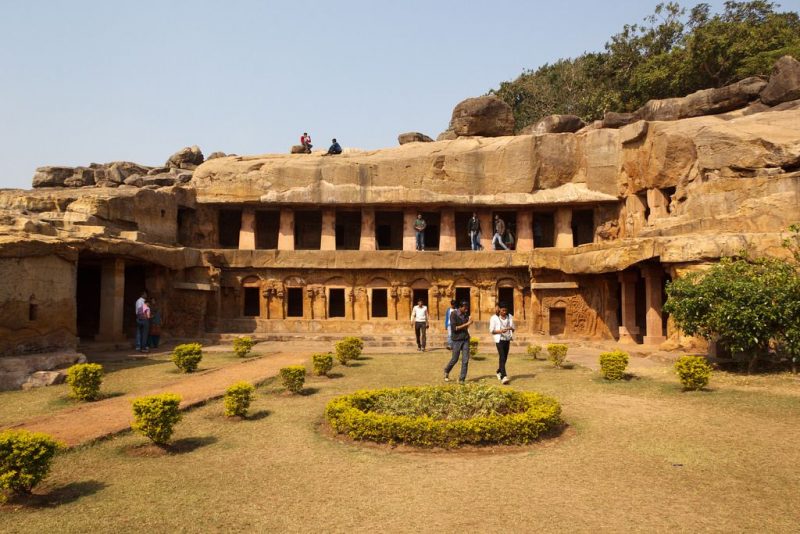
Udayagiri and Khandagiri Caves are partly natural and partly artificial caves of archaeological, historical and religious importance near the city of Bhubaneswar in Odisha, India. The caves are situated on two adjacent hills, Udayagiri and Khandagiri, mentioned as Kumari Parvat in the Hathigumpha inscription. They have a number of finely and ornately carved caves. It is believed that most of these caves were carved out as residential blocks for Jain monks during the reign of King Kharavela. Udayagiri means "Sunrise Hill" and has 18 caves while Khandagiri has 15 caves.
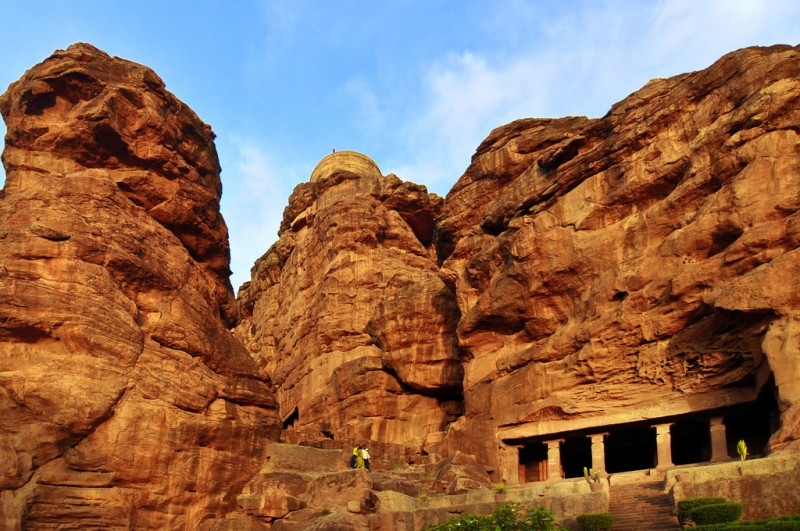
The Badami cave temples are a complex of four Hindu, Jain and possibly Buddhist cave temples located in Badami, a town in the Bagalkot district in northern part of Karnataka, India. The caves are considered an example of Indian rock-cut architecture, especially Badami Chalukya architecture, which dates from the 6th century. Badami was previously known as Vataapi Badami, the capital of the early Chalukya dynasty, which ruled much of Karnataka from the 6th to the 8th century. Badami is situated on the west bank of an artificial lake ringed by an earthen wall with stone steps; it is surrounded on the north and south by forts built in later times.
9. Varaha Cave Temple, Tamil Nadu
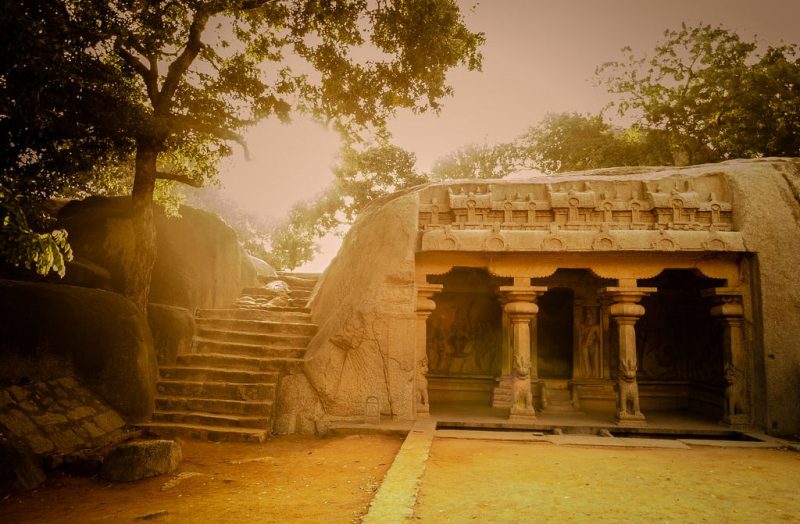
Varaha Cave Temple (also Adivaraha Cave Temple) is a rock-cut cave temple located at Mamallapuram, on the Coromandel Coast of the Bay of Bengal in Kancheepuram District in Tamil Nadu, India. It is part of the hill top village, which is 4 kilometres (2.5 mi) to the north of the main Mahabalipurm sites of rathas and the Shore Temple. It is an example of Indian rock-cut architecture dating from the late 7th century.
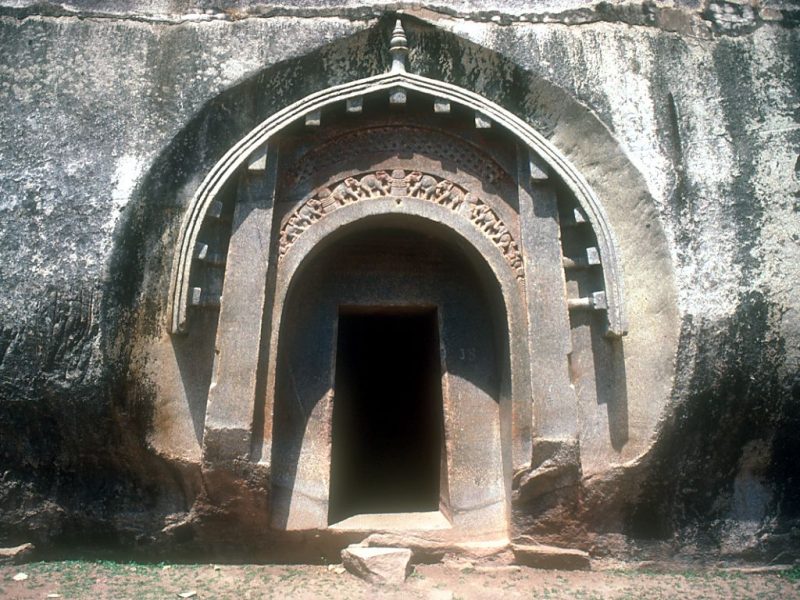
The Barabar Caves are the oldest surviving rock-cut caves in India, mostly dating from the Maurya Empire (322–185 BCE), some with Ashokan inscriptions, located in Makhdumpur Block of Jehanabad district,Bihar, India, 24 km north of Gaya.
11. Lenyadri Caves, Maharashtra
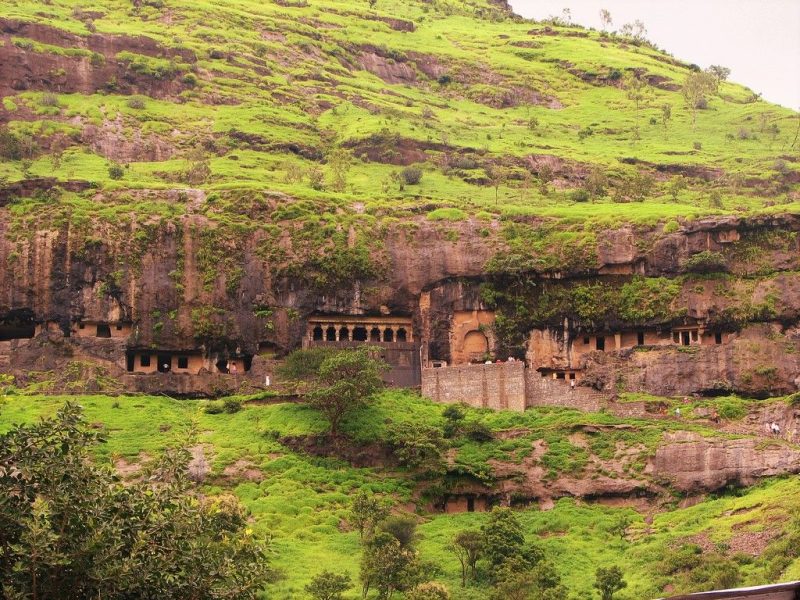
Lenyadri represents a series of about 30 rock-cut Buddhist caves, located near Junnar in Pune district in the Indian state of Maharashtra. Cave 7 is a famous Hindu temple dedicated to the god Ganesha. It is one of the Ashtavinayak shrines, a set of the eight prominent Ganesha shrines in Western Maharashtra.
12. Pandavleni Caves, Maharashtra
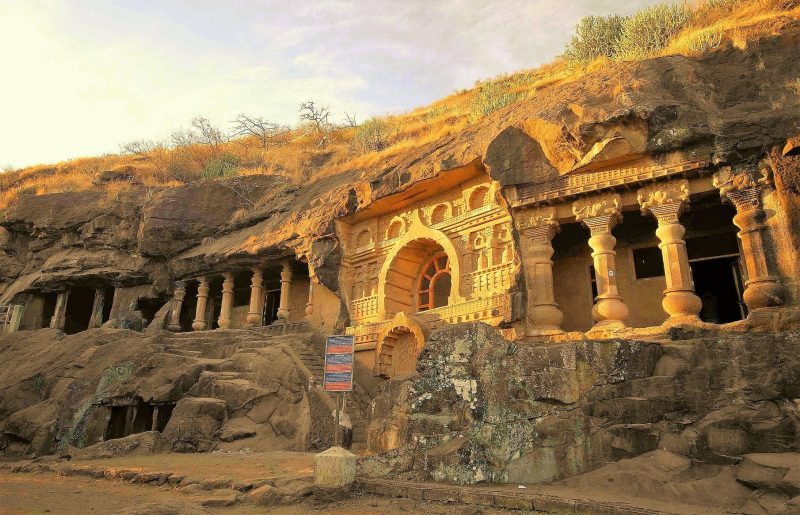
Pandu Leni (also known as Trirashmi Caves and other variations) (Leni is Marathi word for caves), are a group of 24 caves carved between the 3rd century BC and the 2nd century AD, representing the Hinayana Buddhist caves and has nothing to do with the characters of Mahabharata (the Pandavas). Most of the caves are Viharas except for the 18th cave which is a Chaitya. The location of the caves is a holy Buddhist site and is located about 8 km south of Nashik, Maharashtra, India.
13. Bagh Caves, Madhya Pradesh
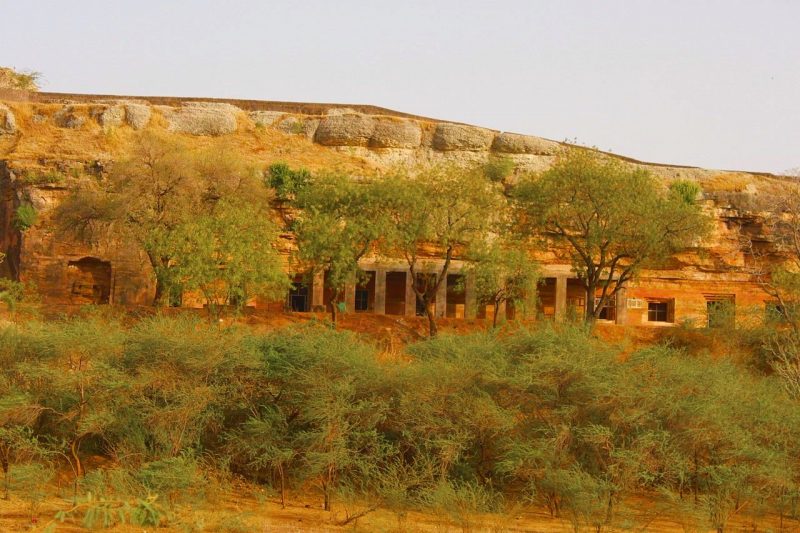
The Bagh Caves are a group of nine rock-cut monuments, situated among the southern slopes of the Vindhyas in Bagh town of Dhar district in Madhya Pradesh state in central India. These monuments are located at a distance of 97 km from Dhar town. These are renowned for mural paintings by master painters of ancient India. The use of the word "cave" is a bit of a misnomer, since these are not natural, but instead examples of Indian rock-cut architecture. The Bagh caves, like those at Ajanta, were excavated by master craftsmen on perpendicular sandstone rock face of a hill on the far bank of a seasonal stream, the Baghani
14. Jogeshwari Caves, Maharashtra
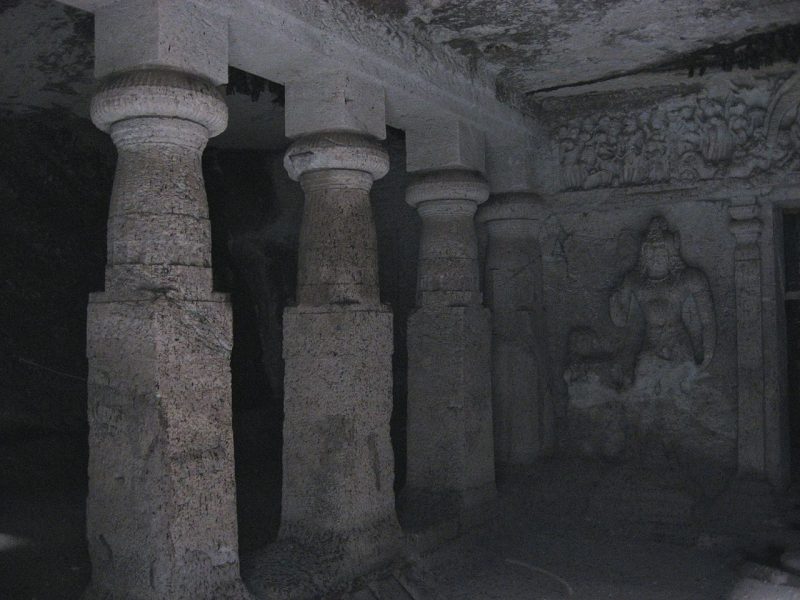
The Jogeshwari Caves are some of the earliest Hindus and Buddhist cave temples sculptures located in the Mumbai suburb of Jogeshwari, India. The caves date back to 520 to 550 CE.These caves belongs to the last stage of the Mahayana Buddhist architecture. According to historian and scholar Walter Spink, Jogeshwari is the earliest major Hindu cave temple in India and (in terms of total length) ' the largest'.
15. Udayagiri Caves, Madhya Pradesh
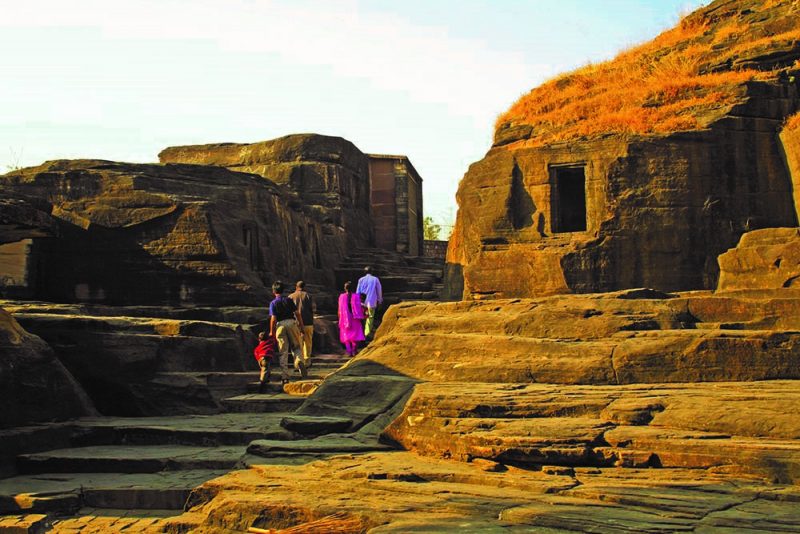
The Udayagiri Caves feature some of the oldest Hindu images and cave temples in India. They are located near the city of Vidisha, northeast of Bhopal in the state of Madhya Pradesh. One of India's most important archaeological sites from the Gupta period, the Udayagiri hills and its caves are an archaeological site under the protection of the Archaeological Survey of India.